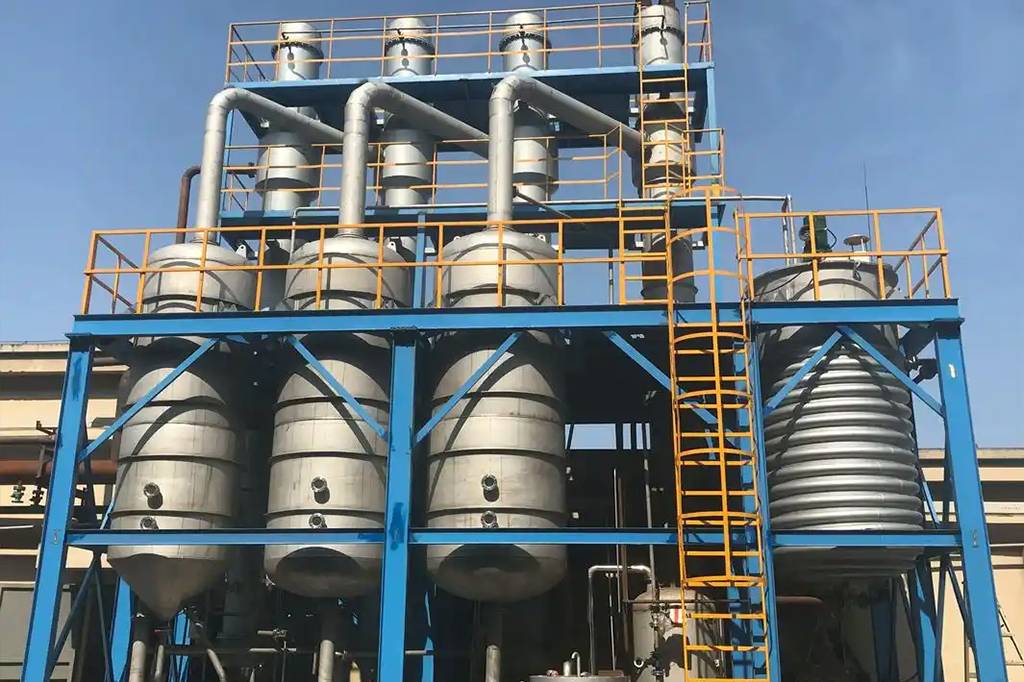Fouling in food evaporators is a silent profit killer. From dairy processors to juice concentrate manufacturers, buildup on heat exchange surfaces can slash efficiency by up to 50%, spike energy costs, and trigger unplanned downtime costing thousands per hour. With global demand for processed foods rising, maintaining clean, high-performing evaporators isn’t optional—it’s existential.
This blog reveals actionable strategies to combat fouling, combining cutting-edge technologies with time-tested operational best practices. Discover how leading food producers are achieving 99% uptime while cutting maintenance costs by 40%.
Why Fouling Happens—and Why It’s Worse Than You Think
Fouling occurs when proteins, minerals, or organic residues accumulate on evaporator surfaces during concentration processes. Common culprits include:
- Calcium scaling in dairy/plant-based milk processing
- Pectin deposits in fruit juice evaporation
- Protein denaturation in broth/sauce production
- Sugar caramelization in syrup manufacturing
The hidden impacts:
- ⚡ Energy consumption increases by 15-30% as heat transfer efficiency drops
- 🛑 Production capacity decreases due to frequent cleaning cycles
- 💸 Maintenance costs surge from chemical cleaners and part replacements
- 🚨 Product quality risks from incomplete sterilization or flavor contamination

7 Proven Strategies to Prevent Evaporator Fouling
1. Smart Feed Pretreatment
- Ultrafiltration (UF): Remove particles >20 kDa before evaporation (reduces protein fouling by 60%)
- pH Adjustment: Control mineral solubility (e.g., citric acid for calcium-rich liquids)
- Enzyme Treatment: Break down pectin/starch in fruit/vegetable concentrates
Case Study: A tomato paste producer cut fouling-related downtime by 70% after implementing enzymatic pre-treatment.
2. AI-Powered Process Optimization
Modern IoT-enabled evaporators use machine learning to:
- Predict fouling thresholds using viscosity/temperature/pressure sensors
- Auto-adjust flow rates and temperatures to stay below deposition points
- Schedule clean-in-place (CIP) cycles only when needed
Result: 35% longer run times between cleanings at a leading infant formula plant.
3. Advanced Surface Engineering
Innovative evaporator designs combat fouling through:
- Nanocoatings: Non-stick ceramic/polymer surfaces reduce adhesion forces
- Electropolished Stainless Steel: Smoother surfaces (Ra <0.5 µm) resist buildup
- Swirl Flow Tubes: Turbulent flow prevents particulate settling
4. Dynamic Temperature Control
Prevent thermal degradation with:
- Low-Temperature Evaporation (40-60°C): Ideal for heat-sensitive proteins
- Gradual Heating Profiles: Avoid sudden phase changes that trigger scaling
- Zone-Specific Controls: Separate high-fouling and low-fouling sections
5. Water Hammer Pulsation Technology
Pioneered in the chemical industry, this method uses controlled pressure waves to:
- Dislodge soft deposits before they harden
- Maintain heat transfer coefficients above 90%
- Extend CIP intervals by 2-3x
6. Real-Time Monitoring & Analytics
Implement:
- Laser turbidity sensors to detect early fouling
- Digital twin simulations to test cleaning protocols virtually
- Predictive maintenance algorithms that correlate energy use with fouling stages
7. Green Cleaning Innovations
Replace harsh chemicals with:
- Biodegradable detergents (enzymatic/nanoemulsion)
- Electrolyzed Water (e-water): pH-adjusted solution removes biofilm without corrosion
- CO₂ Snow Cleaning: Dry ice blasting for organic residues
The Cost of Inaction: A Frozen Dessert Maker’s Wake-Up Call
A Midwest ice cream manufacturer ignored early fouling signs in their milk evaporator, leading to:
- 🔧 48 hours of unplanned downtime during peak season
- 💰 $18k in emergency cleaning/repairs
- 📉 12% batch rejection rate from caramelized flavors
After adopting ultrasonic sensors and enzymatic cleaners: - 📈 22% higher throughput
- 🌱 60% less wastewater
- 🔋 18% energy savings
Future-Proof Your Evaporators
Emerging antifouling technologies to watch:
- Graphene-based coatings with 99% anti-adhesion properties
- AI-guided CRISPR microbes that digest specific fouling compounds
- Self-heating evaporator surfaces preventing temperature gradients
Your Action Plan for Fouling-Free Operations
1️⃣ Conduct a Fouling Audit: Map deposit types and frequency
2️⃣ Benchmark Against Industry Standards: Compare your CIP duration/energy use
3️⃣ Start Small: Pilot a single strategy (e.g., feed pretreatment)
4️⃣ Leverage OEM Expertise: Most evaporator manufacturers now offer antifouling packages
In today’s margin-driven market, preventing fouling isn’t just about equipment longevity—it’s about sustaining competitive advantage. With the right mix of technology and operational discipline, food processors can turn their evaporators from maintenance headaches into reliability champions.
Ready to eliminate fouling headaches? [Discover tailored solutions for your production line →]